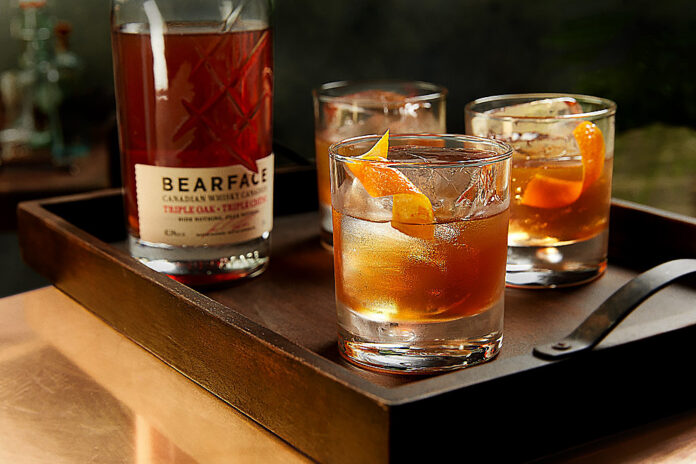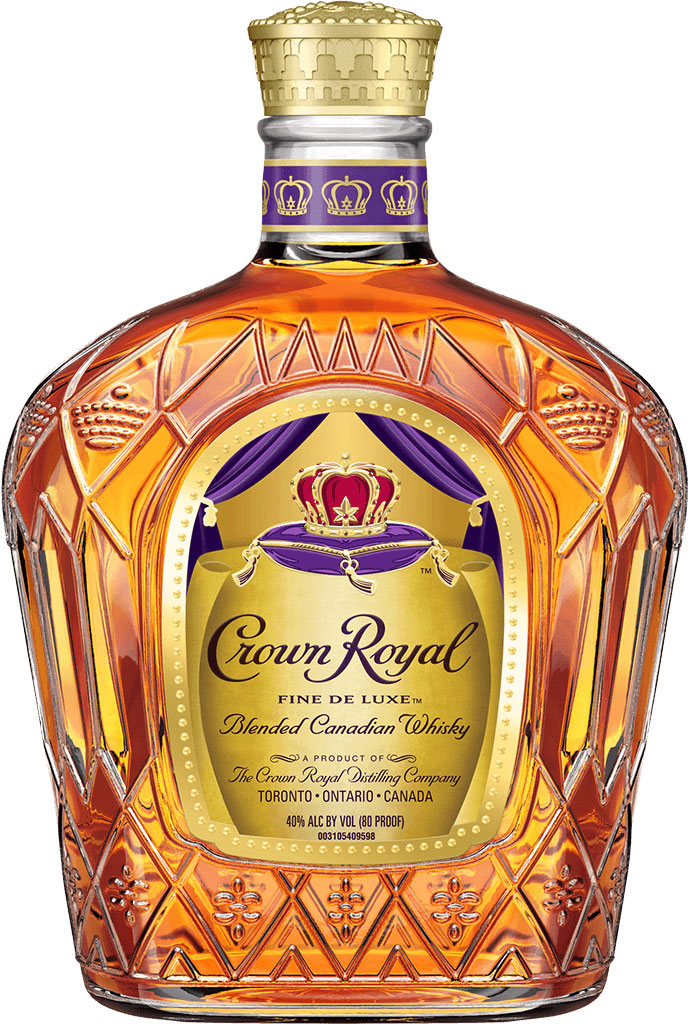Although bourbon has been the big story in North American whiskey, Canada has a long history of producing original and creative whisky. Given its close ties with Scotland (hence the “whisky” spelling), which brought distillation experience, and the country’s ample natural resources, such as high-quality grains and pure water sources, it’s no surprise that Canada became a whisky powerhouse.
Canada hasn’t shared in the modern whiskey resurgence, however, even though some of the biggest and best-selling brands are Canadian whiskies. But as the enduring bourbon boom continues to boost interest in brown spirits, more whisky fans might look to the Great White North for unique expressions with smooth and mellow character.
Hey Big Blenders
Crown Royal, owned by Diageo, is by far the largest Canadian whisky brand, with a 42% share of the market, according to The Beverage Information Group, the data partner of Cheers and Beverage Dynamics. Black Velvet, from Heaven Hill Brands, is second with a 9% share, followed by Canadian Club (Beam Suntory), Canadian Mist and Rich & Rare (both Sazerac Co.), which all claim a roughly 6% share of the Canadian whisky market.
Other than being produced in Canada, what makes a whisky Canadian? In a word, blending.
The production method involves careful blending of classic whiskey grains such as corn, rye, barley and wheat. In fact, Canadian whisky is often referred to as rye, since it was traditionally a prominent flavor in the mash bill. Rye adds a touch of spice to the whisky, balancing the sweetness of corn, the complex notes from barley and the smoothing properties of wheat.
Canadian whisky must age for minimum period of three years in oak barrels. But unlike with bourbon production, the casks do not have to be new barrels, so whatever was in the barrels first will contribute to the whisky’s flavor development and character over time.
“Because Canadian whisky is aged in used barrels, it is generally known for having a light, smooth taste profile,” says Max Gerdes, brand manager for Heaven Hill. “This makes Black Velvet whisky a very approachable option for those just getting into whisky — it is great as a light sipper or mixed into a cocktail.” Heaven Hill acquired Black Velvet from Constellation Brands in 2019.
Distillers in Canada have the leeway to experiment with various grain combinations and barrel finishing, which results in creative expressions. Canadian whisky also tends to be a considerable value compared with Scotch and many aged bourbons.
Staging a Comeback
Despite the advantages and appeal, the Canadian whisky category has struggled in recent years. After more than five years of consecutive annual growth, volume consumption for Canadian whisky contracted 1.6% in 2022, ending the year at 17.4 million 9-liter cases, and then fell 3.1% in 2023, according to estimates from The Beverage Information Group.
Why? The category has faced fierce competition from straight whiskey and tequila, as well as the ready-to-drink (RTD) segments, says Marina Velez, research director, Data & Insights for The Beverage Information Group. There have been some bright spots, though. Reflecting the interest in premium products, super-premium volume drove growth in the Canadian whisky category, up 118% since 2003, she notes.
Canadian whisky has unique differences among consumer demographics when compared to other whiskey categories, according to a 2022 MRI-Simmons USA National Consumer Study on the beverage alcohol that participants drank in the past six months. The survey found that Canadian whisky appeals to more women than any other whiskey, with 41.8% who said they drank the spirit, compared to 33% to 36% in other whiskey categories.
Canadian whisky also appeals more to consumers with an annual household income of less than $75,000 at 43.9% who said they drank the spirit in the past six months, compared to 33% to 35% in other whiskey categories, which speaks to the category’s value proposition.
And as flavored whiskys have become more popular, the Canadian style’s usually smooth, sweeter flavor profile provides a natural progression to flavored variants.
Cinnamon-flavored Canadian whisky Fireball is perhaps the best known, though it’s typically classified as a liqueur. Root Out root beer flavored whisky, launched in 2018, is based on a smooth Canadian blend aged four years in ex-bourbon American oak barrels that previously stored bourbon.
Category leader Crown Royal in particular has embraced flavored expressions, including Peach, Vanilla, Regal Apple and Salted Caramel. The brand will launch a limited edition Blackberry whisky this summer.
New Brands, Promos and Cocktails
Canadian whisky introductions and innovations abound. Alberta Distillers Ltd in spring 2022 launched its core expression, Alberta Premium, in the U.S. — marking the first time the top-selling 100% rye whisky will be available stateside. Whisky critic Jim Murray’s Whisky Bible series had named Alberta Premium Cask Strength as World Whisky of the Year in 2021.
Bearface Canadian Whisky, launched in 2018 by White Claw parent Mark Anthony Brands, works with the wilderness and its powerful natural elements “to transform our whisky into something more wild and adventurous through elemental aging, according to the company” The process involves oak casks matured in repurposed shipping containers, exposed to the elements in the Canadian wilderness.
The brand in December released Matsutake 01 in the U.S. debut of its Wilderness Series. Bearface infused the expression with wild Matsutake mushrooms for a umami finish.
Crown Royal in November launched the first of several short films that showcase the brand’s premium label, Crown Royal Deluxe. Each film focused on a different pillar of Crown Royal’s liquid attributes.
Corby Spirit and Wine announced in January 2023 that its flagship brand J.P. Wiser’s is the Official Canadian Whisky of the Detroit Red Wings. The multi-year partnership included several branding placements and activations at Little Caesars Arena, inclusions in Red Wings game broadcasts, and promotions on both J.P. Wiser’s and the Red Wings’ social media channels.
J.P. Wiser’s branding is featured throughout Little Caesars Arena in the form of a branded bar, advertising throughout the venue and a concourse activation for select home games, while the arena’s four restaurants sell the whisky.
And then there are whisky cocktails — both original recipes and reimagined classics — that help shed light on the Canadian style of the spirit. Bearface, for instance, last year promoted the Old Fearless, which combines Bearface Triple Oak Whisky with charred cedar bites and maple syrup.
Black Velvet pairs well with a variety of ingredients and works in riffs on classics such as the Julep and Manhattan, says Gerdes. “With today’s cocktail culture, you can really lean into more spirit-forward cocktails, or find those that mix in a way where the sum is greater than its parts,” Gerdes says. “Canadian whisky, and Black Velvet in particular, tend to play in this second area — making it approachable and very palatable.”
Melissa Dowling is editor of Cheers magazine, our on-premise sister publication. Contact her at mdowling@epgmediallc.com, and read her recent pieces, 7 Beverage Alcohol Trends for 2024 and The Top Gin Trends in 2024.







In my previous life as a whisky peddler, distilled spirits expert/trainer and on/off premise sales director in the Great State of Texas where Crown Royal has grown on trees for the last 30 years, I must say that I have yet to taste a Canadian blend of any great depth, nuance, or complexity. However, it is sweet, mild, drinkable (particularly for the American palate) and mixes well. Mr. Seagrams certainly knew what he was doing in pre- and post Prohibition. Another reason for its lack of character may have to do with the fact that so many of the Canadian distillers buy, trade and borrow so much product between themselves that anyone with a nose for spirits has a difficult time telling any subtle differences between Canadians in blind tastings (in fact, I attended several workshops where Windsor beat Crown Royal hands down over 80% of the time!).
But don’t take my word for it. Conduct your own brown spirit tasting; Bourbon, Scotch, Irish…hell, even some of the stuff coming out of Texas. You’ll discover that Canadian whisky is to be quaffed, not savored.